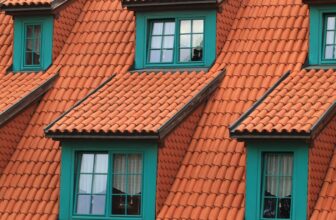Can Drywall Get Rained On? (Find Out The Truth!)
Nowadays, drywall is a common element in almost every home. It’s fairly cheap, easy to install, and great for creating separation between the rooms.
It’s rather sturdy and resistant to various kinds of damage.
Still, as its name implies, drywall should stay dry and keep away from moisture.
As drywall is typically an indoor component, you don’t really have to be concerned about it getting wet or rained on, but in certain situations, this still may happen.
A leaky roof, rainwater seeping under window sills, plumbing defects, storing drywall sheets outside before installation, or flooding due to heavy rain are just some of the causes that can lead to drywall getting rained on and wet.
Below, I’ll explain can drywall get rained on and what kind of damage will happen if it gets wet.
Table of Contents
Can Drywall Get Rained On?

The materials that drywall is made of are what makes it so cheap and handy for installation, but also what makes it prone to damage when rained on or dampened in some other way.
Typically, a sheet of drywall consists of gypsum plaster firmly pressed between two thick pieces of paper and may include some other materials such as plasticizer, foaming agent, or starch.
When these materials are exposed to water for a longer period, the drywall will likely become warped, swollen, stained, and you may even notice mold growth.
It will lose its structural integrity, become weak, and crumble.
Depending on how much water penetrates the drywall and how long it stays wet, the degree of damage will vary.
Minor Dampening
In case the drywall is only mildly dampened, it likely won’t get ever damaged.
So if you spill some water on the wall or it gets wet due to a minor leak, the drywall won’t get destroyed and you won’t have to replace it.
However, it’s important to react on time, stop the flow of water, and dry the wall surface with towels or something similar.
In addition, place the fan in front of the affected area and direct the airflow towards it to speed up the drying process.
If you do all this, you will probably manage to dry the drywall before it gets irreversibly damaged.
There may still be some minor issues, but they are easy to deal with. If a wall gets a bit discolored, simply paint over it with white paint.
Nevertheless, if you notice that the wet portion of drywall is sagging or warping, it’s best to cut that part out and install a new sheet.
Major Dampening
In some cases, drywall will be exposed to more water over an extended period of time. This is likely to cause permanent damage.
For example, this can happen if the drywall is exposed to heavy rain or when there’s a severe flood in the house.
Even after the drywall dries out, it won’t return to its original state or keep its shape.
Most likely, it will be severely warped and noticeably discolored. At any pressure, it will probably crumble into chalky and dense powder.
The only thing to do here is to remove the affected drywall, dry out the surroundings, and install new sheets.
How to Test Drywall for Moisture
Before moving on to install new sheets, you should first determine the level of damage by establishing how much moisture is in the drywall.
You can do this regularly so you may catch any water leak early before it becomes noticeable.
There are different ways to do it, some more precise than others.
You can use a non-penetrating moisture meter or poke holes in hidden areas of drywall with a screwdriver to test the structural integrity and firmness of drywall.
For more accurate results on moisture inside the wall, you can use a penetrating moisture meter. If there’s any insulation, you should check it for moisture as well.
Conclusion
Drywall is a relatively sturdy and durable element and some are even treated to increase their waterproofing level.
Still, all this only means that they can resist water to a certain extent.
Any drywall, if exposed to water for a longer period, will get damaged, often permanently. Frequently, you will have to remove the entered affected area and install new drywall sheets.
This is why you should always make sure that the drywall is installed or stored in a way that it can’t get rained on and keep an eye out for any potential water leakages in your house, as this is likely to save you a lot of money and trouble.



















































































